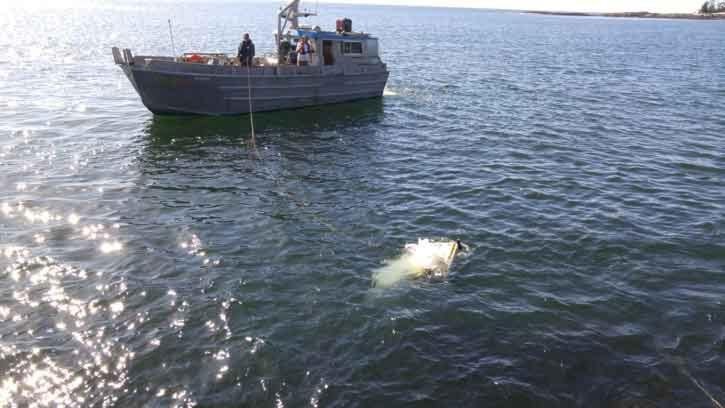Data is already streaming from Prince Rupert to Victoria through the newly installed ocean observatories positioned around the North Coast.
It took Ocean Networks Canada (ONC) two years to get to this point of officially launching community observatories in Kitimat and in Prince Rupert on the west side of Digby Island and instrumentation on Ridley Island.
The ONC team are part of a University of Victoria initiative to collect and archive data from ocean observatories along the B.C. coast to help inform public policy on earthquakes, climate change, marine safety and coastal conservation.
Maia Hoeberechts, associate director of user services for ONC, was at the NorthWest Community College for the public information session on March 31. She wanted to stress that all the information is freely available to the public on the ONC website once the data has been received and documented.
“It will take two months of validation to make sure the instruments are delivering data,” Hoeberechts said. The organization is already receiving data at the University of Victoria, but they have to be sure there are no kinks in the system.
“Then the real discoveries will take two to 10 years,” she said.
The community observatory on Digby Island has an underwater, cabled seafloor platform with live-streams from a video camera. It also has a hydrophone to record noises from whales and vessels, and an instrument to record local water quality.
Ridley Island has a land-based observatory equipped with a video camera to monitor environmental conditions and an automatic identification system antenna, which can track and record vessel traffic in the area.
The long road to installation involved acquiring approval from First Nation communities, provincial and federal levels of government and land owners where the instrumentation would be located. Then ONC had to wait out the winter for better weather conditions.
With the arrival of the new scientific equipment along the coast, Northwest Community College is also introducing a new instrument technology course in January 2017.
“The observatories offer hands-on experience and could lead to survey work,” Hoeberechts said.
For example, the hydrophone, the underwater microphone at the observatory on Digby Island, could offer experience to students learning how to survey noise in the ocean. Elementary and high school students in the region can also tap into the data posted online and learn more about the surrounding underwater environment.
The operation and maintenance of the observatories is projected to last more than 20 years and over that time the public can keep track of changes happening on the coast along with researchers in Victoria.
